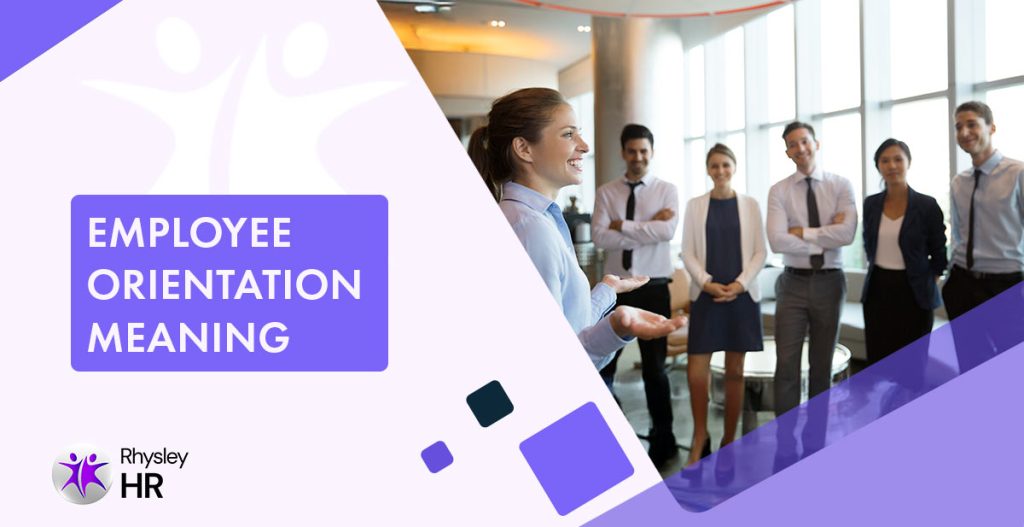Explore all premium features with a 1-Year Free Trial. Schedule your demo NOW!

What is Employee Orientation? Its Meaning and Importance
Understanding the meaning of employee orientation begins with recognizing its role in easing the chaos of starting a new job. New hires often face a flood of information—company rules, job expectations, workplace culture, and more—all at once.
To help them navigate this overwhelming phase, companies use a structured process called employee orientation.
Some people think orientation and onboarding are the same. They are related, but not identical. Orientation is the first short-term step to welcome new employees. Onboarding is a longer process that supports new hires over weeks or months.
This blog explains what employee orientation means, its purpose, how it works, and why it matters.
What is Employee Orientation?
Employee orientation means welcoming a new employee and guiding them through the company’s rules, culture, and job expectations. It usually takes place on the first day or during the first week of work.
The goal is to help the new person understand their role, meet the team, and learn about company policies, procedures, and workplace systems such as time and attendance tracking.
In human resources, employee orientation in HRM (Human Resource Management) is seen as an important step in supporting a smooth transition. It helps employees feel comfortable and prepared as they begin their new job.
Goals and Purpose of Employee Orientation
The purpose of an orientation program is to guide new employees through the first steps of their journey with the company. The main goals include:
- Helping the employee feel welcome
- Reducing confusion and stress
- Explaining company values and culture
- Sharing the rules, policies, and expectations
- Improving early job performance
When employees understand what is expected from the start, they are more likely to feel confident and perform better in their roles. These goals make orientation a valuable investment for any workplace.
Key Components of an Effective Employee Orientation Process
A well-planned employee orientation process includes several clear steps. These may vary depending on the company, but most follow a similar structure:
Welcome Session:
A brief introduction to the company and team members.
Overview of the Organization:
Sharing the company’s history, mission, and values.
Review of Policies:
Explaining workplace rules, safety guidelines, dress codes, and more.
Job Role Introduction:
Clarifying duties, responsibilities, and performance goals.
Workplace Tour:
Showing important locations such as restrooms, break rooms, and exits.
Technology and Tools:
Providing access to systems, tools, and equipment.
Q&A Session:
Allowing time for the employee to ask questions.
Each step helps the employee feel informed and ready to begin working. HR professionals often prepare checklists to ensure that no important details are missed.
Read More: Checklist for HR Department – A Complete Guide
Types of Employee Orientation
There are different ways to organize orientation. These include:
Formal Orientation:
A structured program with presentations, training sessions, and written materials.
Informal Orientation:
A more casual approach, usually led by a manager or coworker, focused on personal interaction.
Orientation can also be done individually or in groups:
Individual Orientation:
One-on-one sessions tailored to the specific employee.
Group Orientation:
New hires attend orientation together, which can save time and build early team relationships.
The type of orientation depends on the company’s size, style, and the role of the new hire.
Benefits of Employee Orientation for New Hires
A strong orientation program brings clear benefits to both the employee and the employer:
Better Retention:
New hires who feel welcomed and prepared are more likely to stay long-term.
Faster Productivity:
Employees who know what to do and where to go can begin contributing sooner.
Improved Engagement:
Orientation helps new employees feel like part of the team, which increases motivation and involvement.
For new hires, orientation reduces first-day stress and boosts confidence. For employers, it creates a smoother start and saves time in the long run.
Employee Orientation vs Onboarding: What’s the Difference?
It’s common to mix up these two terms, but they mean different things.
Employee orientation is a short-term process. It usually happens during the first few days and focuses on giving general information about the company and the employee’s role, including how to access tools like employee self-service portals for basic tasks.
Onboarding is a longer process. It can take several weeks or months and includes deeper training, regular feedback, and support as the employee becomes fully settled.
Orientation is part of onboarding. It’s the starting point in a bigger plan to help employees grow into their roles.
Role of HR in Employee Orientation
The HR desk plays a key role in planning and running orientation programs. Their responsibilities include:
- Creating orientation materials and schedules
- Making sure all policies and procedures are clearly explained
- Answering employee questions
- Keeping records of completed orientation sessions
- Ensuring legal and company standards are followed
HR acts as a guide, making sure new hires get the information and support they need from day one.
Conclusion
Employee orientation is more than a simple welcome. It’s a structured process that helps new employees understand the company, their job, and how they fit in. With a good orientation program, employees start with confidence, and companies see better performance, engagement, and retention.